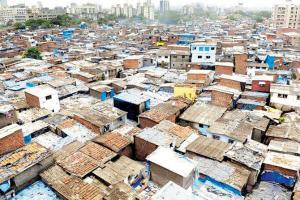The former deputy mayor of Barcelona, who spent a day in Dharavi last year, explains what Mumbai needs to undo in order to become 'smart'

Dharavi might hold little charm for a Mumbaikar, but for Antoni Vives, former deputy mayor of Barcelona (2011-2015), it is a lesson in what was once right but now wrong with Mumbai. During a visit to the city a few months ago, Vives, a consultant with the Pune Smart City Development Corporation Limited (PSCDCL), decided to spend an entire day in the slum, out of sheer curiosity. "What I discovered was how this close-knit space generated social bonds between its residents.
But with very good intentions, somebody has decided to tear it all down and put the people into high-rises. In the process, they are breaking the only thing that these communities have - their social bonds," he says.
ADVERTISEMENT

The Dharavi Redevelopment Project must include open spaces and walkways, insists Antoni Vives, who was in the city to release the Marathi translation of his book titled Smart City Barcelona. Pic/Sneha Kharabe
Vives was in the city on Friday to release the Marathi translation of his book, Tumhi bi Ghada Na (originally titled Smart City Barcelona). Translated by Sulakshana Mahajan and Karuna Ghokale, the book documents Vives's plan for transforming Barcelona into a model smart city that could be replicated globally. "Smart City as a term shouldn't blind us," says the policy maker. "It is simply a city that uses technology it is surrounded by, to improve the quality of life and opportunities of the citizens. To make this possible, the only thing that urban planners need to do is ensure that the life and prosperity of a city is based on human interactions."
'Go back to basics'
Vives feels that administrators working on the Dharavi project could make room for course correction. "The most ideal plan would be to go back to the basics, like how people of Mumbai generated the nicest quarters in the past - with ground-plus-four buildings, pedestrian walkways and open spaces," he says.
Despite a few reservations, he admits that he is a huge fan of this place. "There is no city in the world like Mumbai," he says. Like Pune, he says, Mumbai is "scandalously optimistic" and brimming with energy. "There are some obvious problems of course, like traffic congestion.
Mumbaikars also need to realise the amazing might of their heritage, not just the stones from the Victorian era, but also the current social heritage. The cosmopolitanism of this city is unparalleled, and it needs to be valued," he says, adding, "The smartness of a city is sometimes in just widening a side-walk, or cleaning the nullahs and creating the most beautiful walkable streets around it."
Catch up on all the latest Mumbai news, crime news, current affairs, and also a complete guide on Mumbai from food to things to do and events across the city here. Also download the new mid-day Android and iOS apps to get latest updates
 Subscribe today by clicking the link and stay updated with the latest news!" Click here!
Subscribe today by clicking the link and stay updated with the latest news!" Click here!







